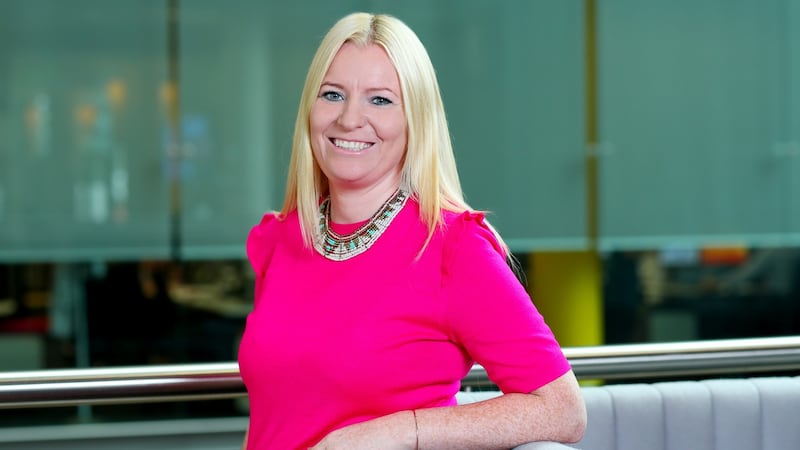PwC’s latest CEO Pulse Survey found that the majority of Irish business leaders (70 per cent) see data analytics as the emerging technology which offers the greatest opportunities for their businesses. At the same time, nearly half (48 per cent) said that the inability to exploit digital analytics is a threat to growth.
"Data analytics offers an immense opportunity for businesses to improve efficiency, create new and better products and services and free up people to get involved in higher value and more interesting work," says PwC tax partner John Murphy. "Tax has a role to play and there is a great opportunity to leverage the data generated and held within tax functions to make greater contributions to the overall business bottom line."

Murphy explains that tax departments are in possession of vast amounts of valuable data which has been poorly utilised up until now. “Data insights are at the heart of tax and business strategic decision making,” he adds. “The use of data analytics opens up amazing opportunities to optimise the value of existing data assets and capitalise on untapped business intelligence. PwC has invested heavily in people and technology to specifically help our tax clients maximise these opportunities to improve tax reporting and business decision making.”
According to Andrea Paolella, PwC senior tax manager, the key challenges in maximising data usage within tax functions include the lack of easy access to "clean" and robust data, tax reporting systems not being optimised and multiple tax users often making similar data requests absorbing time and goodwill within the IT function.

Managing costs
Paolella points out that companies are looking at data analytics for a number of reasons, including managing tax costs more efficiently across broader business functions such as people mobility and supply chains. Also driving the focus on the use of tax data analytics are the increasing global trends around real time tax reporting and use of data analysis in revenue audits.
Ireland is ahead of the curve here, with the Revenue Commissioners investing heavily in their analytics capabilities from a technology and people perspective, and payroll tax real time reporting being introduced from January 1st, 2019. In light of these changes, taxpayers need to adopt a “right first time mentality” to minimise the amount of time spent dealing with Revenue interventions and to have a better handle on their data to ensure they know as much about their business as the tax authorities.
To help clients respond to this trend, PwC Tax has more than 400 of its people trained in analytics techniques and has developed a range of analytics tools and applications to assist its tax team and its clients in a variety of business areas.
The apps are designed to address the data challenges which our clients face and to respond to specific client issues.
These issues and applications include ensuring the tax effectiveness of group financing arrangements: M&A Target Profiling to ensure that the value from a deal is maximised; a Pension Transfers Predictor to help employers and employees manage scheme costs and benefits; a Revenue Audit Preparation app; a Global Trade Analyser; and “VatView”, an indirect tax analysis tool.
These new tools were recently showcased to clients. Murphy explains: “The purpose of the event was to demonstrate the opportunities that data analytics can bring to tax and finance functions. We are also running client workshops and are now rolling out our apps to individual clients and are delighted with the feedback we are receiving.”
Understanding customs and excise
The Global Trade Analyser app focuses on understanding the customs and excise costs of a business and is particularly topical as it can also be used to run scenarios around the impact of Brexit, according to Murphy. “A lot of work has gone into this tool and it’s very easy to use,” he says.
“Companies can use it to see where their supply chain Brexit exposures lie so that they can look at ways of mitigating them.
“For example, we had a client who thought supplies were coming direct from continental EU locations to Ireland but our analysis showed they had come through the UK en route to Dublin, which would have had significant customs costs in a hard Brexit scenario. That assisted the client to address the potential issue before it could arise. You can use the tool to run different scenarios around hard and soft Brexit to help develop strategies to deal with them.”
In a market of increased deal activity, Paolella points out that the M&A Target Profiling App can be particularly valuable in maximising the value of transactions. “We have a number of projects in this space looking at the value chain of what is being acquired and where this is aligned with the purchaser.
“Then we look at the proposed future operating model when you knit them together. Significant value in M&A deals can rest in the integration of the businesses post-acquisition. “That’s where our focus lies.”
People mobility
Other areas where data analytics has helped PwC deliver value is in the area of people mobility, including highlighting some surprising results. “We are working with a client which is quite focused on people mobility,” Murphy continues. “The firm offered mobility opportunities to their best and brightest employees. This came at a very high cost in terms of tax equalisation, relocation costs and so on. We carried out an analytics project combining information from their HR and tax functions and found that the top performers usually wanted to remain in the same locations. The company was spending a lot on mobility but not getting much back in terms of their overall goal of incentivising their key staff. This was an insight which has driven a review of their overall mobility programmes.”
The real beauty of these tools and apps lies in how they are presented. “You don’t have to be a data scientist to use the tools or to understand the business information they deliver,” Murphy points out. “The data analytics training our people have received allows them to extract insights from client data and overlay that with the depth of tax experience that they bring.
“Our tax professionals build the applications so that they can run the tools for our clients. The results are presented using visualisation techniques so they are very easy to understand; much easier than a spreadsheet. In the future, tax professionals will spend a lot less time formatting data and a lot more time generating insights from the data and sharing them in ways that are transformational for businesses. We want to help our clients get the most from the data opportunities for their businesses.”
Tax data analytics
More than ever, organisations need to understand and extract value from digital technology. PwC Ireland has the knowledge and experience to help you harness the potential of data analytics. In a world of constant change, trust the leading voice in tax, and for more information, visit pwc.ie.











